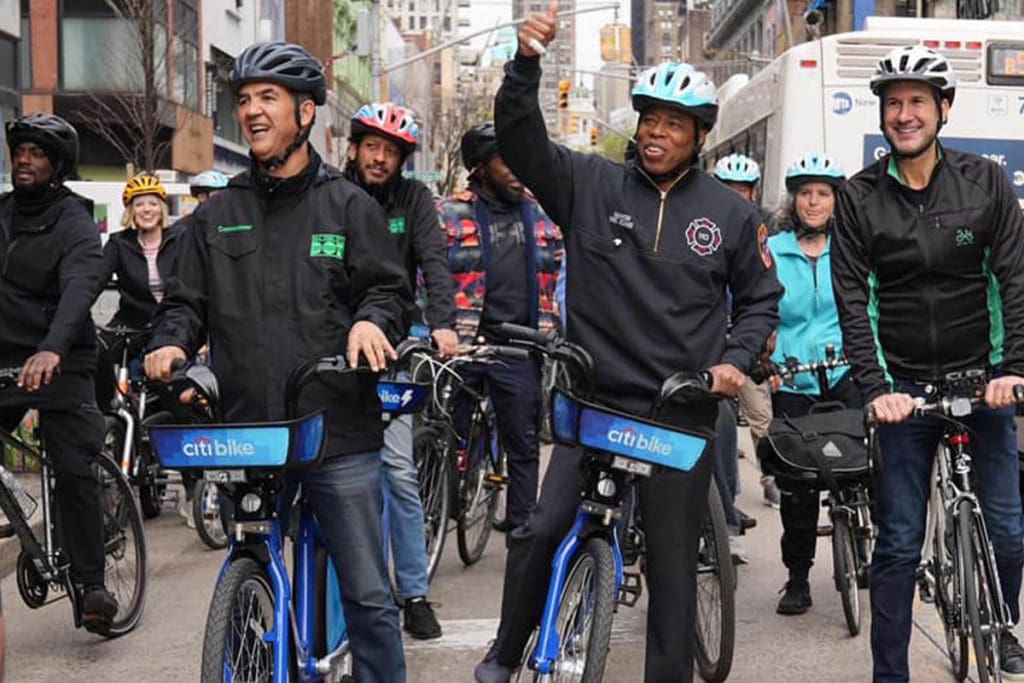$904 Million Pledge for New York Road Safety Infrastructure

New York, US
New York Mayor Eric Adams recently announced a $904 million (A$1.318 billion) allocation for road safety infrastructure over the next five years, including additional bike lanes and dedicated bus lanes.
During Car Free Earth Day last month, the Mayor announced what he called the largest investment in street safety in the city’s history.
“As part of this investment, we are installing barriers on five of our protected bike lanes across the city. This is part of our 20 miles that we want to reach … in protected bike lanes,” he told a media event after cycling over Brooklyn Bridge on a share bike.
“These are our streets, and it’s about riding, skateboarding, walking. It’s about being able to move throughout your city in a safe way. Motivating our children to bike to school, safe corridors for them to bike to school once or twice a week.”
He said New York officials needed to ensure the city’s pathways are safe, “where people can feel comfortable in utilising the bike infrastructure that we have”.
“We are so far behind international leaders. When you go to other cities and countries across the globe, they’re so far ahead of us,” he told the event.
“We don’t follow in New York, we lead in New York, and so we are going to regain our leadership under the next few years to make sure that this is the place where people will come and study and analyse how we got it right.”
New York Department of Transportation Commissioner Ydanis Rodriguez said the funding would help New Yorkers reduce their “dependency on dangerous cars and embrace safer, greener alternatives like biking and transit”.
“The future of our city depends on our alternative forms of transportation. It is crucial that we continue to embrace electric and green and motor transportation in a city that is only composed by 350 square miles.
“I’m encouraging New Yorkers to leave their cars at home, not only today, but as many days as possible.”
Safety upgrades include replacing plastic bike lane barriers with more solid barriers.
